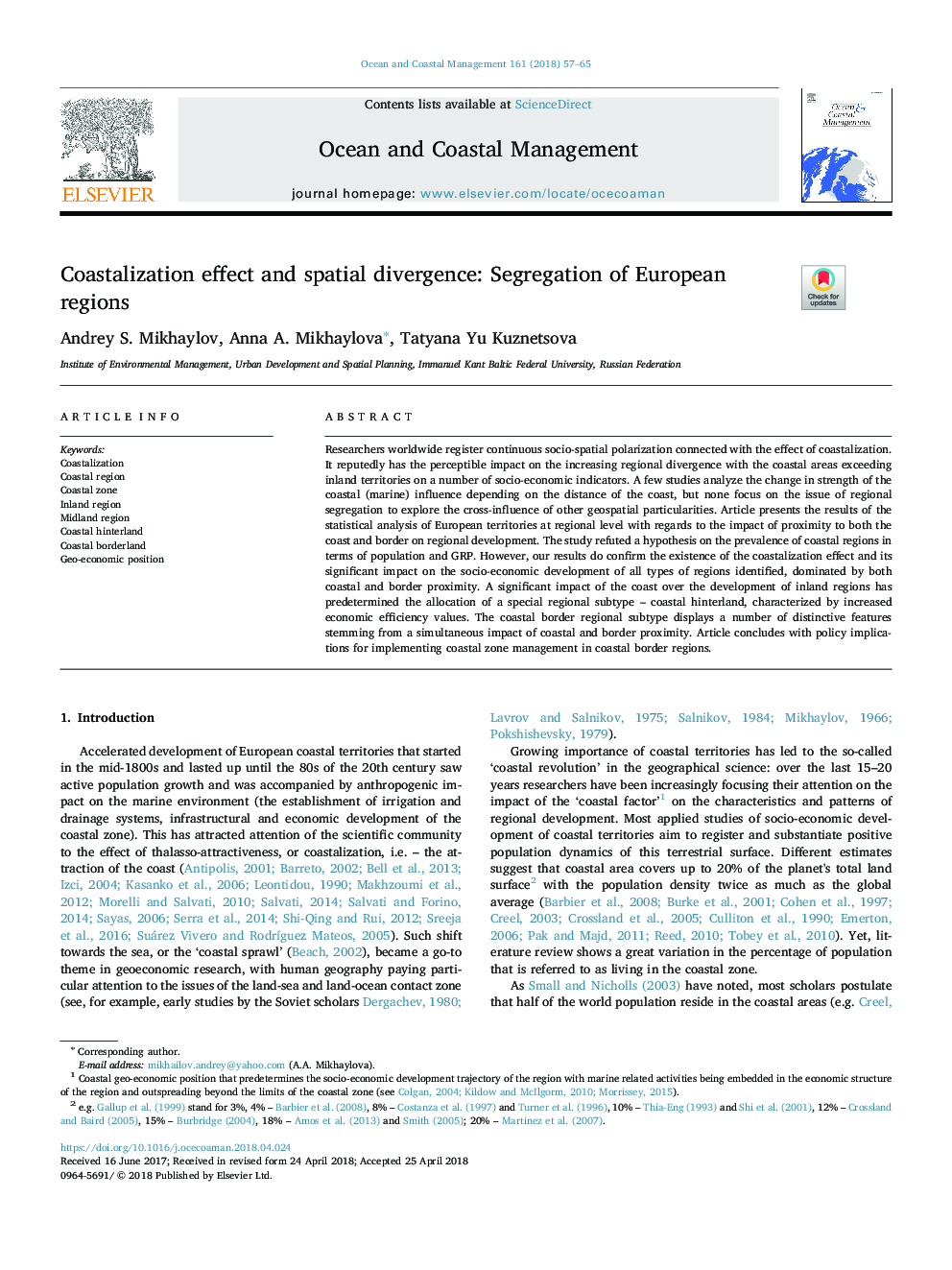| Article ID | Journal | Published Year | Pages | File Type |
|---|---|---|---|---|
| 8060609 | Ocean & Coastal Management | 2018 | 9 Pages |
Abstract
Researchers worldwide register continuous socio-spatial polarization connected with the effect of coastalization. It reputedly has the perceptible impact on the increasing regional divergence with the coastal areas exceeding inland territories on a number of socio-economic indicators. A few studies analyze the change in strength of the coastal (marine) influence depending on the distance of the coast, but none focus on the issue of regional segregation to explore the cross-influence of other geospatial particularities. Article presents the results of the statistical analysis of European territories at regional level with regards to the impact of proximity to both the coast and border on regional development. The study refuted a hypothesis on the prevalence of coastal regions in terms of population and GRP. However, our results do confirm the existence of the coastalization effect and its significant impact on the socio-economic development of all types of regions identified, dominated by both coastal and border proximity. A significant impact of the coast over the development of inland regions has predetermined the allocation of a special regional subtype - coastal hinterland, characterized by increased economic efficiency values. The coastal border regional subtype displays a number of distinctive features stemming from a simultaneous impact of coastal and border proximity. Article concludes with policy implications for implementing coastal zone management in coastal border regions.
Keywords
Related Topics
Physical Sciences and Engineering
Earth and Planetary Sciences
Oceanography
Authors
Andrey S. Mikhaylov, Anna A. Mikhaylova, Tatyana Yu Kuznetsova,
